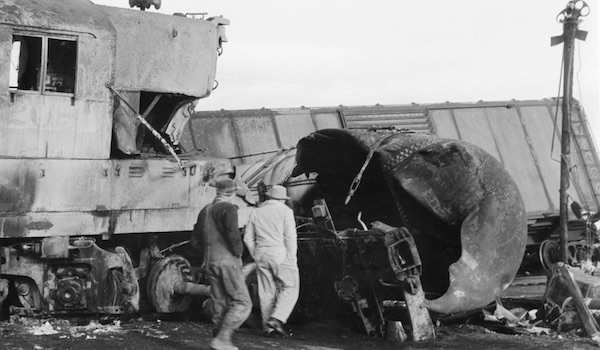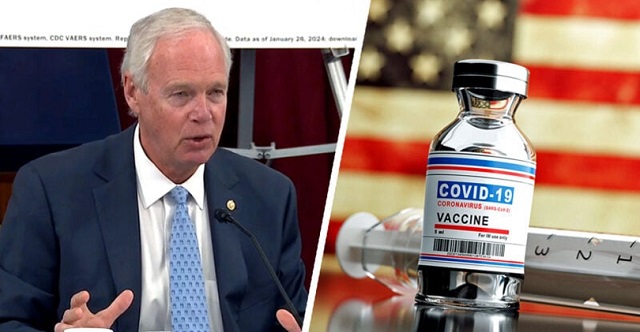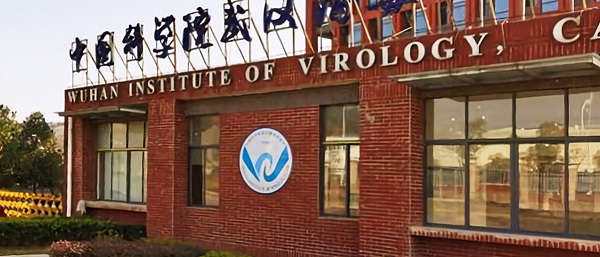Alberta
Painful History: The worst tragedy in the history of the Northern Alberta Railways

This article is submitted by members of the Alberta Railway Museum
CARBONDALE JUNCTION
On November 10, 1959, 13.6 miles North of Dunvegan Yards, the worst tragedy in the history of the Northern Alberta Railways (NAR) occurred. As a result, four people died and half a dozen men were released from their positions following a public inquest.
STATION HISTORY
The hamlet of Carbondale, North of Edmonton’s Dunvegan Yards, was at one time home to a small railway station on the Northern Alberta Railways (NAR) line. NAR was a CN-CP Rail joint venture that operated throughout Northern Alberta from 1929 to 1981. Carbondale is where the mainline split, allowing passengers and freight either West to Grande Prairie and Dawson Creek, or East to Fort McMurray.
The station was not only a stop en-route to several destinations along the line but, from 1956-1959 it was also the home of Station Agent Arthur “Art” Fraser, his wife Alice, and their youngest of three children, son Kelly (18 years) who were previous station agents in Smith, Alberta.

Courtesy of Shannyn Rus, 2020
SERIES OF TRAGIC EVENTS
On November 10, 1959, the weather was cool and a bit windy as the sun was peaking over the horizon. Carbondale Station was closed until 9am on weekdays and the Frasers were nowhere to be seen. NAR passenger train No.2 was southbound behind CN steam locomotive 5115, having left Grande Prairie the night before, destined for Edmonton. No.2 passed through Morinville at about 7:51 a.m., and was due at Carbondale at 8:00 a.m., on schedule, but was not scheduled to stop.
While the passenger train was headed south, NAR Train No.31, lead by NAR diesel locomotives 202 & 208 with 119 freight cars, left Edmonton behind schedule. In a rush to depart from the city at 7:20 a.m., crew members had improperly placed a tank car filled with gasoline directly behind the two engines, a violation of railway marshalling operating rules.
Upon reaching Carbondale at 7:51 a.m., No.31 moved to switch onto a sidetrack to allow the southbound passenger train to pass, but several cars detached from No.31 and were on the main track as the passenger train quickly approached. In a desperate attempt to notify the oncoming passenger train, the brakeman from the freight train ran ahead to deploy an explosive warning device called a torpedo on the track and wave a red flag signalling the steam train to stop. He did not get far, and the engineer of the passenger train did not see or hear the warning signals.
A precisely 8:00 am, the trains collided head on at a speed of 40 km/h (25 mph) resulting in a sound described by a witness as “atomic”. The impact ruptured the tank car, causing the rapid spread of gasoline over the station, a garage, and three vehicles. The gas immediately ignited. The bodies of the Fraser family were found outside of their home by a high-wire fence; it remains speculation as to whether they were attempting to flee the inferno or were blown from their home at the time of the explosion. The body of steam engine Fireman Albert Villeneuve was found in the buckled cab of the steam locomotive. An additional 19 people were injured in the accident.
Living just 18 metres (59 feet) from the station was retired coal miner William Dickinson. He told the Edmonton Journal in 1959 that the blast was “like an earthquake” and shook him awake. Seeing smoke and fire everywhere, he ran to the phone to report the collision, but the phone line was dead – the crash had taken out the phone and power lines, stopping his electric clock at precisely 8:00 am.
THE AFTERMATH
The fire obliterated the station, a garage, and three vehicles. Historic accounts show the station was destroyed except for its fireproof safe and brick chimney. An official investigation followed the collision. Conflicting testimony was given by the flagman from the freight train and the engineer from the passenger train. The flagman was required to go two kilometres (2,000 yards) beyond the stopped freight train to flag and alert the crew of the passenger train.
The flagman testified he went forward approximately 220 metres (240 yards); however, no footprints were found in the fresh snow beyond 23 metres (75 feet). The engineer of the passenger train stated that he did not see the red flag or hear the track torpedoes. The engineer also testified that he failed to see the freight train on the main track until he was about seven metres (23 feet) away, at which time he placed the brakes into emergency.
Following the investigation, the entire crew of No.31, the freight train, was dismissed by the NAR for violating the operating rules by having the train on the main track and not flagging down the passenger train. The engineer of the passenger train, No. 2, was also dismissed for not obeying the rule that the train be prepared to stop at the junction. The conductor of train No. 2 was severely reprimanded for not checking the signals at the junction and “for failure to exercise proper supervision over his train”.

Courtesy of Shannyn Rus, UPI Telephoto ARP-111101-November 10/59
THE BRICKS
62 years have passed since this tragic historic day and what remains buried of the Carbondale station has begun to reveal itself brick by brick. Carbondale resident Shannyn Rus and her family began finding these “ACP” stamped bricks in 2019. The chimney bricks were made by Alberta Clay Products (ACP) which existed from 1909 to 1962 in southern Alberta, near Redcliff.
The Rus family collected 20 full size, intact red bricks from the crash site and have donated them to rest at the Alberta Railway Museum as part of a collection of rail history not to be forgotten or buried again. You can find a short documentary on the Carbondale Station here.
Alberta
Housing in Calgary and Edmonton remains expensive but more affordable than other cities

From the Fraser Institute
By Tegan Hill and Austin Thompson
In cities across the country, modest homes have become unaffordable for typical families. Calgary and Edmonton have not been immune to this trend, but they’ve weathered it better than most—largely by making it easier to build homes.
Specifically, faster permit approvals, lower municipal fees and fewer restrictions on homebuilders have helped both cities maintain an affordability edge in an era of runaway prices. To preserve that edge, they must stick with—and strengthen—their pro-growth approach.
First, the bad news. Buying a home remains a formidable challenge for many families in Calgary and Edmonton.
For example, in 2023 (the latest year of available data), a typical family earning the local median after-tax income—$73,420 in Calgary and $70,650 in Edmonton—had to save the equivalent of 17.5 months of income in Calgary ($107,300) or 12.5 months in Edmonton ($73,820) for a 20 per cent down payment on a typical home (single-detached house, semi-detached unit or condominium).
Even after managing such a substantial down payment, the financial strain would continue. Mortgage payments on the remaining 80 per cent of the home’s price would have required a large—and financially risky—share of the family’s after-tax income: 45.1 per cent in Calgary (about $2,757 per month) and 32.2 per cent in Edmonton (about $1,897 per month).
Clearly, unless the typical family already owns property or receives help from family, buying a typical home is extremely challenging. And yet, housing in Calgary and Edmonton remains far more affordable than in most other Canadian cities.
In 2023, out of 36 major Canadian cities, Edmonton and Calgary ranked 8th and 14th, respectively, for housing affordability (relative to the median after-tax family income). That’s a marked improvement from a decade earlier in 2014 when Edmonton ranked 20th and Calgary ranked 30th. And from 2014 to 2023, Edmonton was one of only four Canadian cities where median after-tax family income grew faster than the price of a typical home (in Calgary, home prices rose faster than incomes but by much less than in most Canadian cities). As a result, in 2023 typical homes in Edmonton cost about half as much (again, relative to the local median after-tax family income) as in mid-sized cities such as Windsor and Kelowna—and roughly one-third as much as in Toronto and Vancouver.
To be clear, much of Calgary and Edmonton’s improved rank in affordability is due to other cities becoming less and less affordable. Indeed, mortgage payments (as a share of local after-tax median income) also increased since 2014 in both Calgary and Edmonton.
But the relative success of Alberta’s two largest cities shows what’s possible when you prioritize homebuilding. Their approach—lower municipal fees, faster permit approvals and fewer building restrictions—has made it easier to build homes and helped contain costs for homebuyers. In fact, homebuilding has been accelerating in Calgary and Edmonton, in contrast to a sharp contraction in Vancouver and Toronto. That’s a boon to Albertans who’ve been spared the worst excesses of the national housing crisis. It’s also a demographic and economic boost for the province as residents from across Canada move to Alberta to take advantage of the housing market—in stark contrast to the experience of British Columbia and Ontario, which are hemorrhaging residents.
Alberta’s big cities have shown that when governments let homebuilders build, families benefit. To keep that advantage, policymakers in Calgary and Edmonton must stay the course.
Alberta
Danielle Smith slams Skate Canada for stopping events in Alberta over ban on men in women’s sports

From LifeSiteNews
The Alberta premier has denounced Skate Canada as ‘disgraceful’ for refusing to host events in the province because of a ban on ‘transgender’ men in women’s sports.
Alberta Premier Danielle Smith has demanded an apology after Skate Canada refused to continue holding events in Alberta.
In a December 16 post on X, Smith denounced Skate Canada’s recent decision to stop holding competitions in Alberta due to a provincial law keeping gender-confused men from competing in women’s sports.
“Women and girls have the right to play competitive sports in a safe and fair environment against other biological females,” Smith declared. “This view is held by a vast majority of Albertans and Canadians. It is also common sense and common decency.”
Women and girls have the right to play competitive sports in a safe and fair environment against other biological females.
This view is held by a vast majority of Albertans and Canadians. It is also common sense and common decency.
Skate Canada‘s refusal to hold events in… pic.twitter.com/n4vbkTx6B0
— Danielle Smith (@ABDanielleSmith) December 16, 2025
“Skate Canada‘s refusal to hold events in Alberta because we choose to protect women and girls in sport is disgraceful,” she declared.
“We expect they will apologize and adjust their policies once they realize they are not only compromising the fairness and safety of their athletes, but are also offside with the international community, including the International Olympic Committee, which is moving in the same direction as Alberta,” Smith continued.
Earlier this week, Skate Canada announced their decision in a statement to CBC News, saying, “Following a careful assessment of Alberta’s Fairness and Safety in Sport Act, Skate Canada has determined that we are unable to host events in the province while maintaining our national standards for safe and inclusive sport.”
Under Alberta’s Fairness and Safety in Sport Act, passed last December, biological men who claim to be women are prevented from competing in women’s sports.
Notably, Skate Canada’s statement failed to address safety and fairness concerns for women who are forced to compete against stronger, and sometimes violent, male competitors who claim to be women.
Under their 2023 policy, Skate Canada states “skaters in domestic events sanctioned by Skate Canada who identify as trans are able to participate in the gender category in which they identify.”
While Skate Canada maintains that gender-confused men should compete against women, the International Olympic Committee is reportedly moving to ban gender-confused men from women’s Olympic sports.
The move comes after studies have repeatedly revealed what almost everyone already knew was true, namely that males have a considerable innate advantage over women in athletics.
Indeed, a recent study published in Sports Medicine found that a year of “transgender” hormone drugs results in “very modest changes” in the inherent strength advantages of men.
Additionally, male athletes competing in women’s sports are known to be violent, especially toward female athletes who oppose their dominance in women’s sports.
Last August, Albertan male powerlifter “Anne” Andres was suspended for six months after a slew of death threats and harassments against his female competitors.
In February, Andres ranted about why men should be able to compete in women’s competitions, calling for “the Ontario lifter” who opposes this, apparently referring to powerlifter April Hutchinson, to “die painfully.”
Interestingly, while Andres was suspended for six months for issuing death threats, Hutchinson was suspended for two years after publicly condemning him for stealing victories from women and then mocking his female competitors on social media. Her suspension was later reduced to a year.
-

 Alberta1 day ago
Alberta1 day agoDanielle Smith slams Skate Canada for stopping events in Alberta over ban on men in women’s sports
-

 International1 day ago
International1 day agoTOTAL AND COMPLETE BLOCKADE: Trump cuts off Venezuela’s oil lifeline
-

 Crime1 day ago
Crime1 day agoThe Uncomfortable Demographics of Islamist Bloodshed—and Why “Islamophobia” Deflection Increases the Threat
-

 COVID-191 day ago
COVID-191 day agoSenator Demands Docs After ‘Blockbuster’ FDA Memo Links Child Deaths To COVID Vaccine
-

 Energy2 days ago
Energy2 days agoLiberals Twisted Themselves Into Pretzels Over Their Own Pipeline MOU
-

 COVID-191 day ago
COVID-191 day agoChina Retaliates Against Missouri With $50 Billion Lawsuit In Escalating Covid Battle
-

 Business13 hours ago
Business13 hours agoCanada Hits the Brakes on Population
-

 International1 day ago
International1 day agoBondi Beach Shows Why Self-Defense Is a Vital Right






